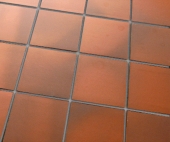I have no idea what I'm talking about here, but....
I think the first pass on the non-ragbuffer wheel what a grinder, where he carefully did the main sharpening and set the angle o the edge. As that grinder moved the metal to the back edge of the blade, what resulted was a fine "wire" of metal at the tip. (Similar to the sawdust that might be on the edge of the wood if you use a belt sander).
So the buffer passes were to then buff off the extra metal, (he called this the weak part of the edge) resulting in only the sharpened blade.
He mentioned the buffer acting like a Razor strop. (think old time barber sharpening his straight edge on that leather belt strap).
Stropping Video:
-Andy










